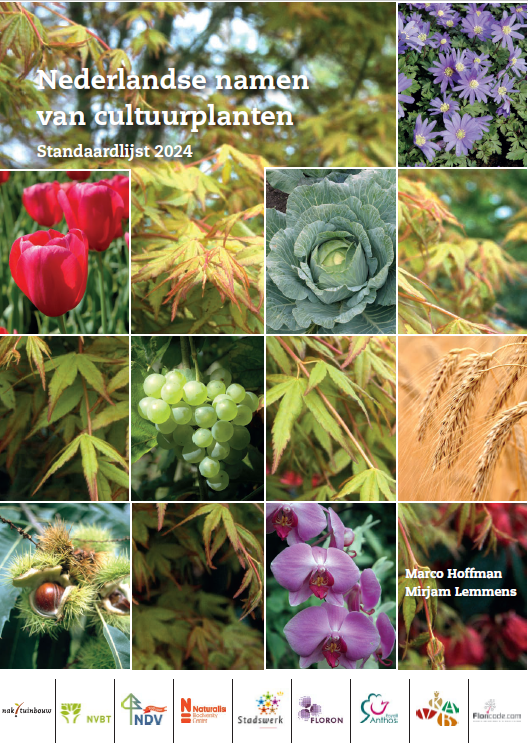
-
Variety Testing
-
Plant Breeders’ Rights and/or listing DUS-VCU
- Breeder's co-trials vegetable crops
- External Crop Experts Ornamental Crops
- Conditions of submitting identity material for DUS testing
- Calibration books Variety Testing
- National protocols Variety Testing
- Procedure of landraces, hobby market and conservation varieties
- American Plant Breeders' Rights - technical testing
- Two tests in one year
- Identity (Variety Tracer)
- Varietal trueness and varietal purity
- Resistance
-
Data of varieties
- Use of a third country synonym for a vegetable variety
- Vegetable-, agricultural- or ornamental crop?
- Authorisation: marketing material of not yet listed vegetable varieties
- Internal Naktuinbouw list for vegetable varieties
- List of names of Woody Plants and List of names of Perennials
- OrganicXseeds: database
- Variety descriptions
-
Plant Breeders’ Rights and/or listing DUS-VCU
- Inspections
- Testing & Analyses
- Knowledge & Education
- About us
-
Variety Testing
-
Plant Breeders’ Rights and/or listing DUS-VCU
- Breeder's co-trials vegetable crops
- External Crop Experts Ornamental Crops
- Conditions of submitting identity material for DUS testing
- Calibration books Variety Testing
- National protocols Variety Testing
- Procedure of landraces, hobby market and conservation varieties
- American Plant Breeders' Rights - technical testing
- Two tests in one year
- Identity (Variety Tracer)
- Varietal trueness and varietal purity
- Resistance
-
Data of varieties
- Use of a third country synonym for a vegetable variety
- Vegetable-, agricultural- or ornamental crop?
- Authorisation: marketing material of not yet listed vegetable varieties
- Internal Naktuinbouw list for vegetable varieties
- List of names of Woody Plants and List of names of Perennials
- OrganicXseeds: database
- Variety descriptions
-
Plant Breeders’ Rights and/or listing DUS-VCU
- Inspections
- Testing & Analyses
- Knowledge & Education
- About us
In the spotlights: New standard list of Dutch names of cultivated plants
A new (second) edition of the standard list of Dutch names of cultivated plants has been available since April 2024. This list creates clarity and uniformity in the world of Dutch plant names.
The standard list contains almost 10,000 preferred names and alternative Dutch names of cultivated plants. It also explains the reasoning behind this approach to compiling and why certain choices were made. In addition to a widely accepted scientific name, there is now also a clear preferred name in Dutch for each known crop. This name is a useful addition to the scientific name for the sector, but not a substitute.
From a confusion of different names to a respected standard list
Cultivated plants are plants that are grown for human use. Dutch plant names for cultivated plants are widely used in practice, for example, in trading, education and (consumer) media channels. Until 2020, there was no list of names for cultivated plants so choosing and using a Dutch plant name was not regulated.
This randomness led to a growing need for a standard list of names in the Netherlands - and that included Naktuinbouw. This demand was finally met in 2020 and initially just only for nursery trees. The idea was already to expanding the list of names to include other crop groups, such as vegetable and agricultural crops. The list proved to be a huge success and was widely used. The second, more extensive edition was published in 2024. The list is now virtually complete and spans all sectors.
Why is the standard list of Dutch names so useful?
Important, sound choices were made to arrive at an uniform standard. These included the use of capital letters, spelling, parts of names separate or joined and determining the correct preferred name. As a result, the spelling of the preferred Dutch names has been standardised. By using the standard list, everyone uses the same Dutch name for the same plant. This immediately clarifies which plant is concerned and removes any confusion.
As an example: the names for Acer davidii
The following Dutch names are used in practice for Acer davidii: Chinese esdoorn, Davids esdoorn, Slangenhuid-esdoorn and Streepjesbast-esdoorn. These names can also be spelled differently: David-esdoorn, streepjesbast-esdoorn, Streepjes bast esdoorn and Streepjesbastesdoorn. The unique and widely used Dutch name Davids esdoorn was designated as the preferred name.
Widespread support in the sector for standard list of names
Specialists from Naktuinbouw and the Dutch Association of Botanical Gardens compiled the list. The Dutch Dendrological Association, KAVB, Floricode, Vereniging Stadswerk Nederland, Floron, Anthos and Naturalis also delivered valuable input. They also actively collaborated with the working party for Dutch names of wild plants, which consists of Dutch and Flemish specialists.
The organisations stress the importance of the standard list of Dutch preferred names, however growers and other users are not under any obligation to use the preferred names. Despite this, uniform use of these plant names is increasing which demonstrates the value of the standard list. And as the same, uniform plant names are increasingly used, our work is becoming a lot clearer and communication more effective.

Naktuinbouw only uses functional and analytical cookies. More information